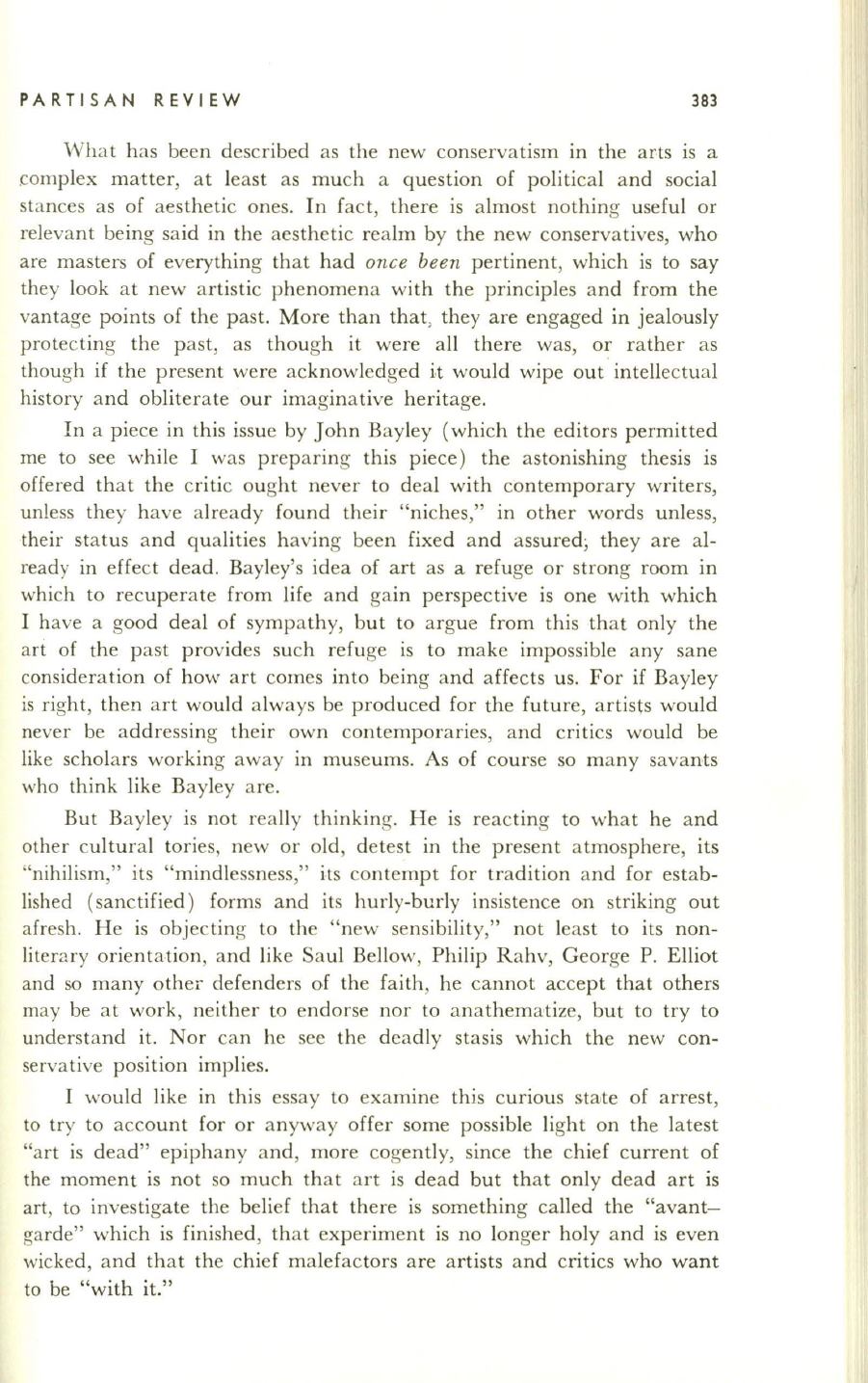
PARTISAN REVIEW
383
'What has been described as the new conservatism in the ar·ts is a
complex maHer, at least as much a question of political and social
stances as of aesthetic ones. In fact, there is almost nothing useful or
relevant being said in the aesthetic realm by the new conservatives, who
are masters of everything that had
once been
pertinent, which is to say
they look at new artistic phenomena with the principles and from the
vantage points of the past. More than that, they are engaged in jealously
protecting the past, as though it were all there was, or rather as
though if the present were acknowledged i.t would wipe out intellectual
history and obliterate our imaginative heritage.
In a piece in this issue by John Bayley (which the editors permitted
me to see while I was preparing this piece) the astonishing thesis is
offered that the critic ought never to deal with contemporary writers,
unless they have already found their "niches," in other words unless,
their status and qualities having been fixed and assured; they are al–
ready in effect dead. Bayley's idea of art as a refuge or strong room in
which to recuperate from life and gain perspective is one with which
I have a good deal of sympathy, but to argue from this that only the
art of the past provides such refuge is to make impossible any sane
consideration of how art comes into being and affects us. For if Bayley
is right, then art would always be produced for the future, artists would
never be addressing their own contemporaries, and critics would be
like scholars working away in museums. As of course so many savants
who think like Bayley are.
But Bayley is not really thinking. He is reacting to what he and
other cultural tories, new or old, detest in the present atmosphere, its
"nihilism," its "mindlessness," its contempt for tradition and for estab–
lished (sanctified) forms and its hurly-burly insistence on striking out
afresh. He is objecting to the "new sensibility," not least to its non–
literary orientation, and like Saul Bellow, Philip Rahv, George P. Elliot
and so many other defenders of the faith, he cannot accept that others
may be at work, neither to endorse nor to anathematize, but to try to
understand it. Nor can he see the deadly stasis which the new con–
servative position implies.
I would like in this essay to examine this curious st3Jte of arrest,
to try to account for or anyway offer some possible light on the latest
"art is dead" epiphany and, more cogently, since the chief current of
the moment is not so much that art is dead but that only dead art is
art, to investigate the belief that there is something called the "avant–
garde" which is finished, that experiment is no longer holy and is even
wicked, and that the chief malefactors are artists and critics who want
to be "with it."


